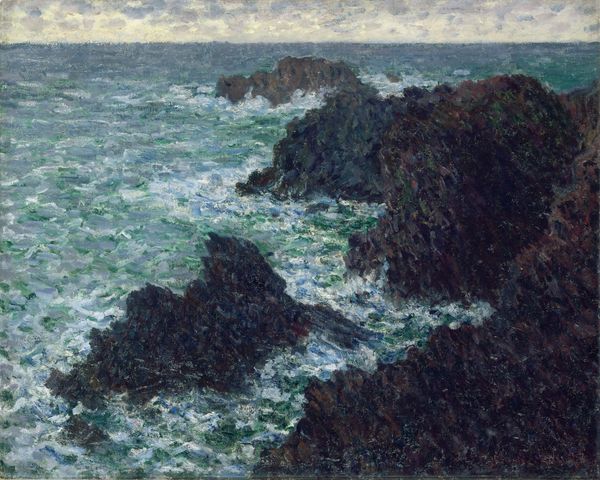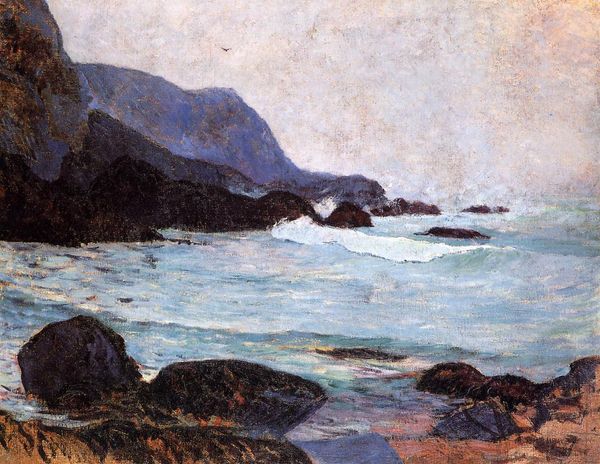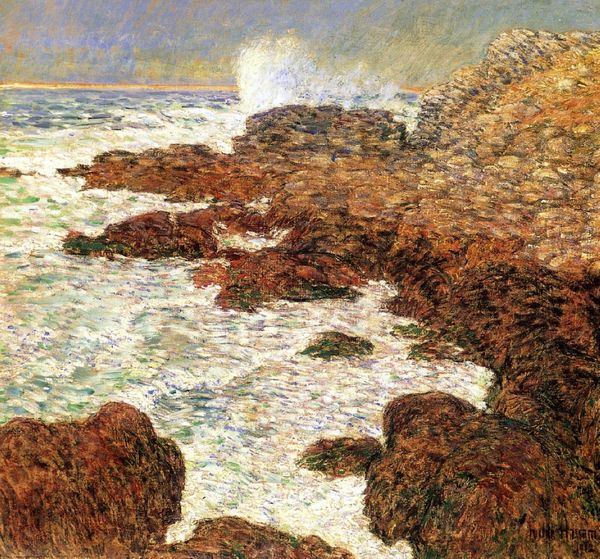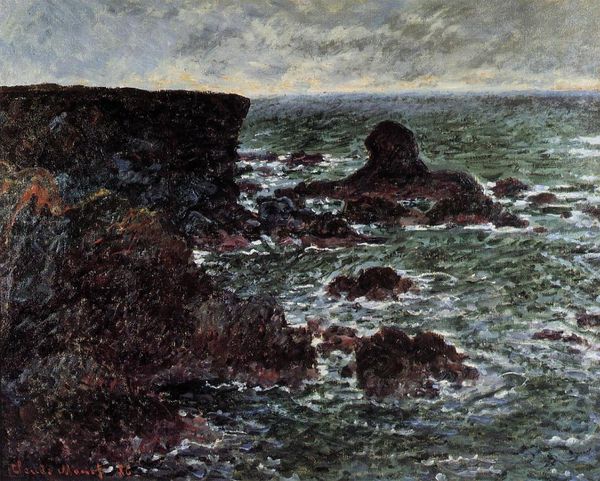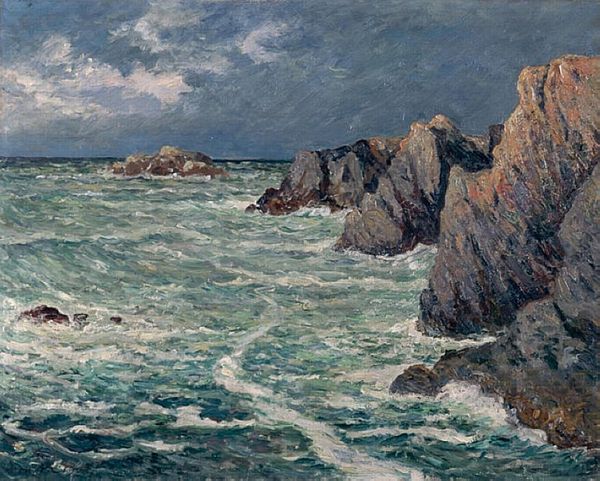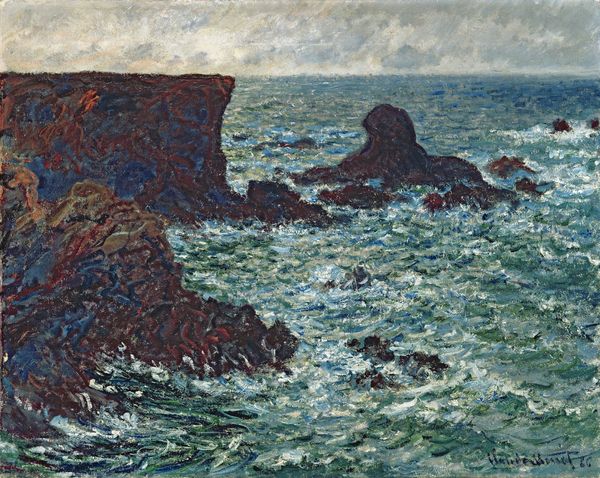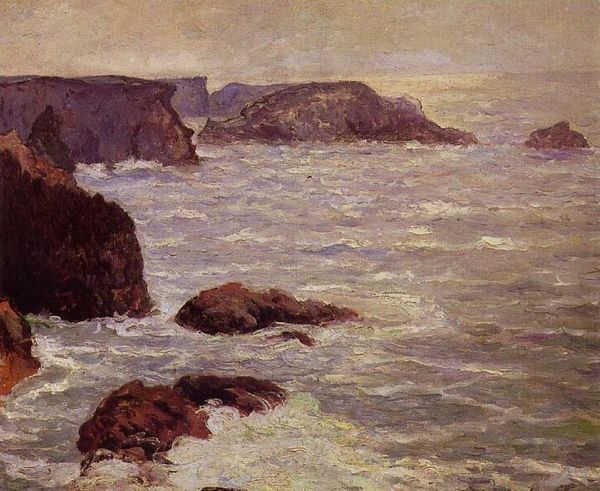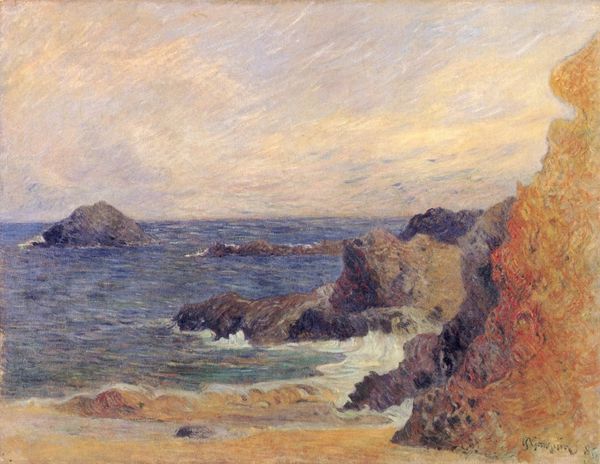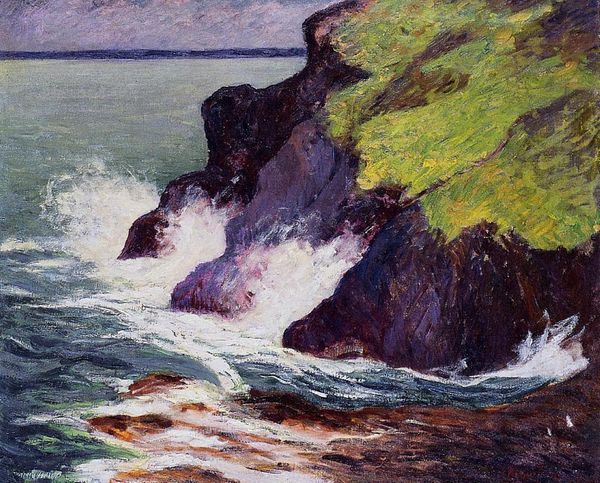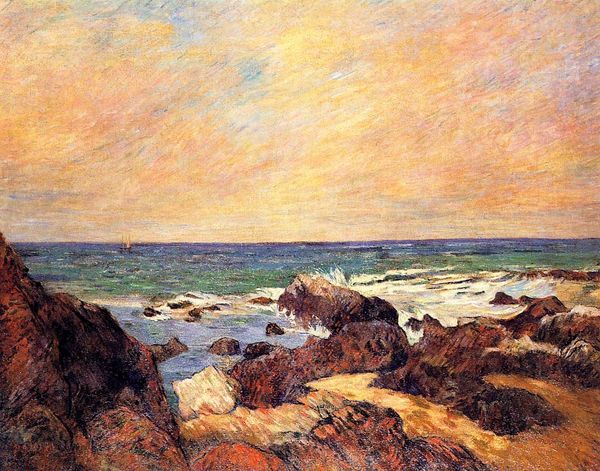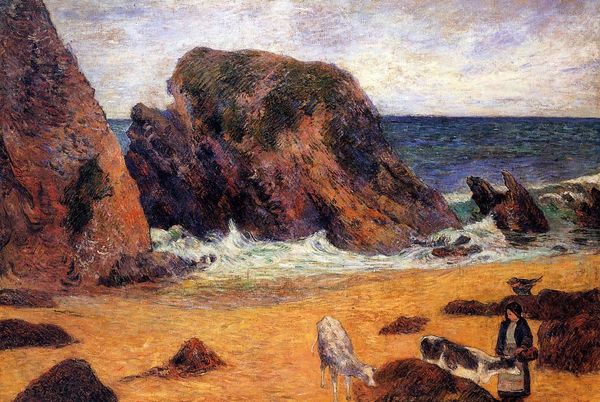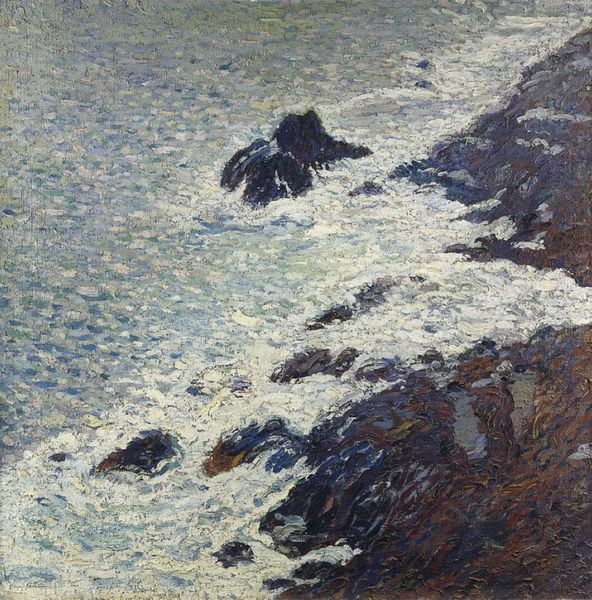
painting, plein-air, oil-paint
#
painting
#
impressionism
#
plein-air
#
oil-paint
#
landscape
#
impressionist landscape
#
oil painting
#
seascape
#
water
Copyright: Public domain
Curator: Here we have Claude Monet's "Belle-Ile, Rain Effect," painted in 1886. The churn of the sea is captivating. What's your first impression? Editor: Dark and turbulent! The roiling waves seem to fight against the craggy, dark rocks. There's a somber feel, almost ominous. It's the visual embodiment of struggle, of nature's power against stubborn resistance. Curator: That's insightful. It was painted during Monet’s stay on Belle-Île, an island off the coast of Brittany. The paintings done there show a shift in his concerns toward the rugged landscape. Look at how he built up layers of oil paint to mimic the very texture of the storm-lashed coast. It marks a turn away from pleasant riverside scenes towards depictions of a harsh and somewhat isolated place. Editor: Right, those dark rocks become symbols themselves, perhaps of enduring strength, maybe even defiance. The contrast with the transient, ephemeral water emphasizes that idea. He wasn’t just capturing a scene; he was presenting elemental forces locked in perpetual conflict. It calls to mind images of ancient mariners, sirens, the lore of the sea. Curator: Interesting, considering the context. He’s using that inherent drama of the landscape to show the struggle to capture such brutal scenery in paint. How can you represent the real with such fleeting effects of light and color? These plein-air studies explore his growing focus on the conditions of making art as labor itself. It wasn’t simply capturing "beauty" as many understand it. Editor: Certainly. It is that push and pull which draws me in, the story held in those turbulent brushstrokes. It has a lasting impact – a sort of raw energy. Curator: Absolutely. Examining the materiality and Monet's dedication allows for greater insights into his practice as a whole. Editor: And seeing the symbols in such a landscape painting allows for broader perspectives, don't you think? Curator: Precisely, that layering provides such insights into its artistic significance. Editor: Indeed!
Comments
No comments
Be the first to comment and join the conversation on the ultimate creative platform.
